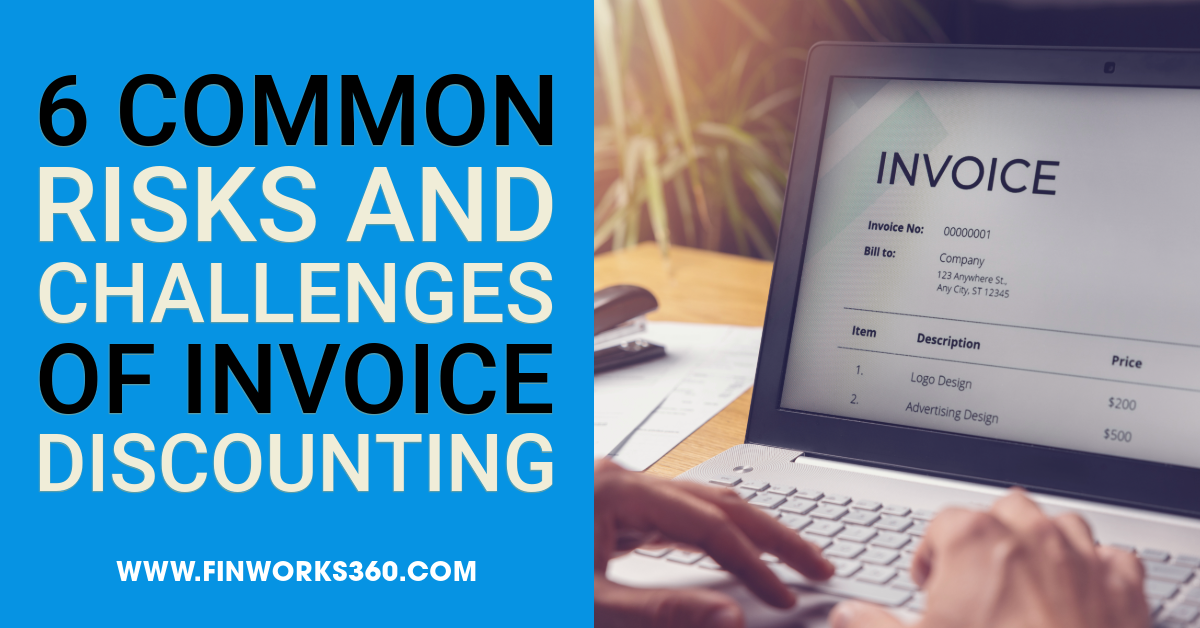Invoice discounting also referred to as bill discounting, is financing that allows businesses to unlock the tied-up funds due to the non-payment from clients by customers for the amounts they owe on their issued invoices and it increases their cash flow. It, however, proves useful for all those firms for which many companies need financing, the risks associated and challenges should be seen in both the company and lenders’ eyes. Next, we cover six key risks and challenges of invoice discounting.
1. Credit Risk of Buyers
The major risk associated with invoice discounting is the credit risk or the probability that the buyer fails to pay. In invoice discounting, a discounting provider advances funds according to the value of the invoice. If the buyer fails to pay, it results in the loss of the company or lender. Many discounting platforms mitigate this by checking the creditworthiness of the buyers before advancing funds. However, it does not mean that there is no possibility of buyers defaulting. This is very true, especially in uncertain markets. Companies can limit such risk by checking the credit profile of their clients. Another way is to hire the services of invoice discounting providers that offer credit insurance.
2. Fraud and Invoice Manipulation
As regards fraud, the bill discounting system poses a huge threat that may have very serious implications in terms of finance. Some companies may present forged invoices or even duplicate the same invoices just to siphon money without transactions or even siphoning twice from the financing source. Detection of fraud would especially be hard with manual and primitive invoice discounting systems. To curb such a risk, the current technology of AI and machine learning assists in the invoice discounting platforms of today to identify anomalies and raise alarms over fraudulent activity. Transparency and verification processes also feature in identifying and preventing fraudulent invoices.
3. Lack of Control Over Buyer Relationships
In using invoice discounting, the relationship between the company and buyers may be compromised, especially when the financier assumes collection. The discounting provider may contact the buyer directly to verify the invoice or collect payments. In some cases, this sometimes creates pressure on the relationship between the company and its buyers. The worst scenarios are when clients view it as a sign of financial distress by the company and may negatively affect the business’s reputation. Selecting a confidential invoice discounting service provider will help preserve confidentiality and avoid any direct contact with the customers, thereby saving customer relationships.
4. Higher Costs and Fees
Invoice discounting can ensure cash flow immediately, but it comes at a cost. Service charges and interest rates may become very steep for companies with an inadequate credit history or if the risk of the buyers’ credit turns out to be high. Though the cost may be beneficial for companies requiring liquidity on short notice, over-reliance on invoice discounting will affect profit margins in the long run. Companies should understand the cost and balance such that the benefits of enhanced cash flow outweigh the fees for such services. Businesses should evaluate multiple providers and negotiate their terms to reduce costs.
5. Dependence on Specific Buyers
For businesses that rely on a few large buyers, invoice discounting creates dependence risks. If the buyers delay payments or refuse to pay, the company is likely to face immediate financial strain, especially when the lender starts recouping advances or demanding repayment. This dependence can also impact the overall risk assessment by lenders, who may raise interest rates or deny further advances. This risk will be minimized if many invoices are discounted from diversified buyers and multiple invoices to the same buyer.
6. Legal and Compliance Issues
Each region has its uniqueness in regulating invoice and bill discounting systems. While compliance for the same may change from one country to the next, international transactions from multinational companies may be a concern. Non-compliance with the law of the relevant region will result in court cases, fines, or even annulment of the discounting arrangement, which would be disastrous to the businesses. Therefore, businesses interested in invoice discounting must seek professional consulting from attorneys or select premium discounting websites that consider regulatory requirements. Companies, especially those venturing internationally, need to keep themselves updated with all the compliance law changes.
Conclusion
Invoice discounting might prove a very helpful tool that can be adopted for raising cash and even facilitating growth for any business; however, on the contrary, businesses must be well aware of and eliminate the risks associated with it. There are costs, of course, and the legal implications and perhaps frauds and defaults as are reflected in the case of buyer credit, so proper management becomes a necessity. Recognizing these risks and association with suitable discounting firms allows an entity to better decide over actions that would not place itself under much risk, so invoice discounting does not pose a costly source of funds. In such cases, embracing technology while maintaining compliance can further optimize the process for Indian businesses and make it a tool for sustained growth in the case of bill discounting.

